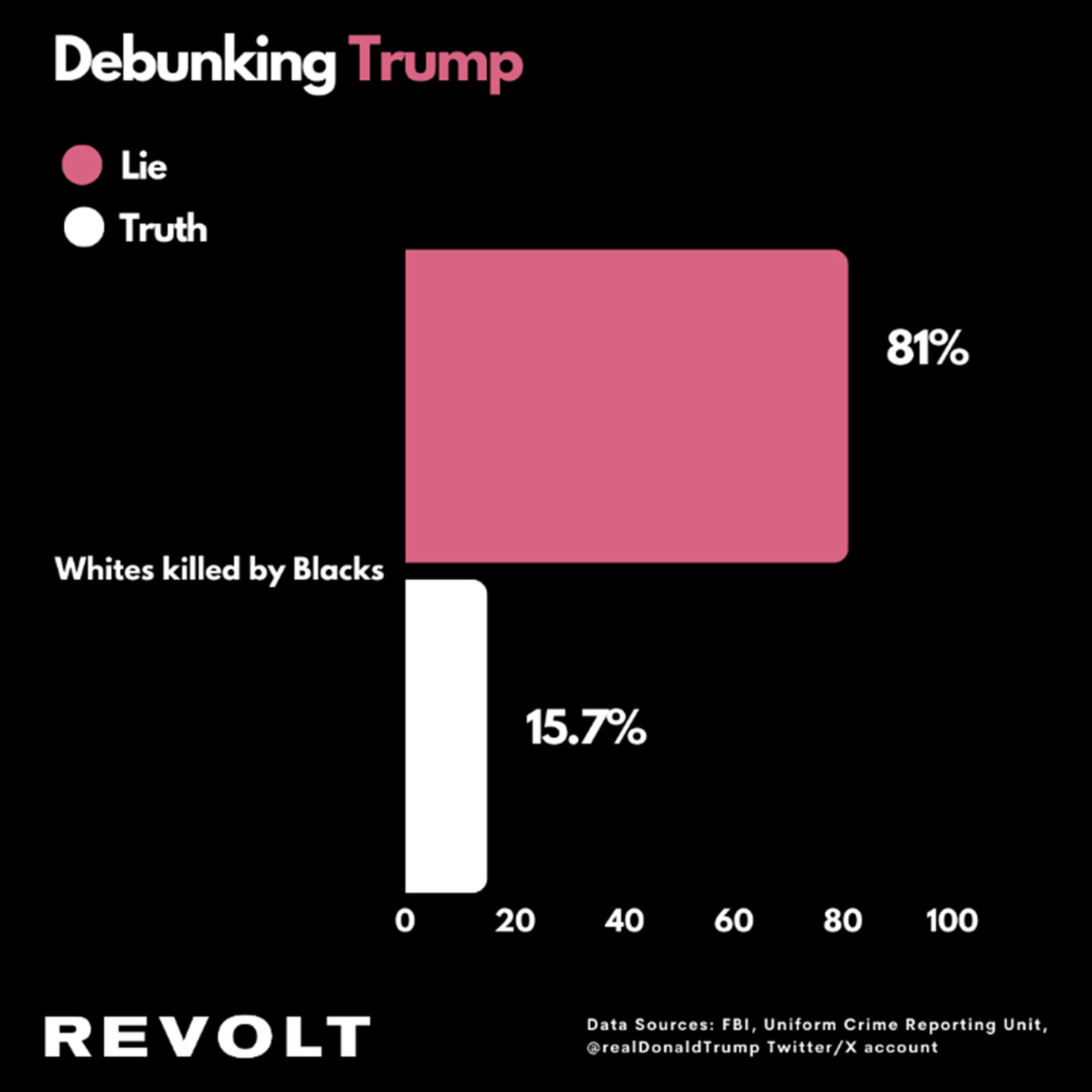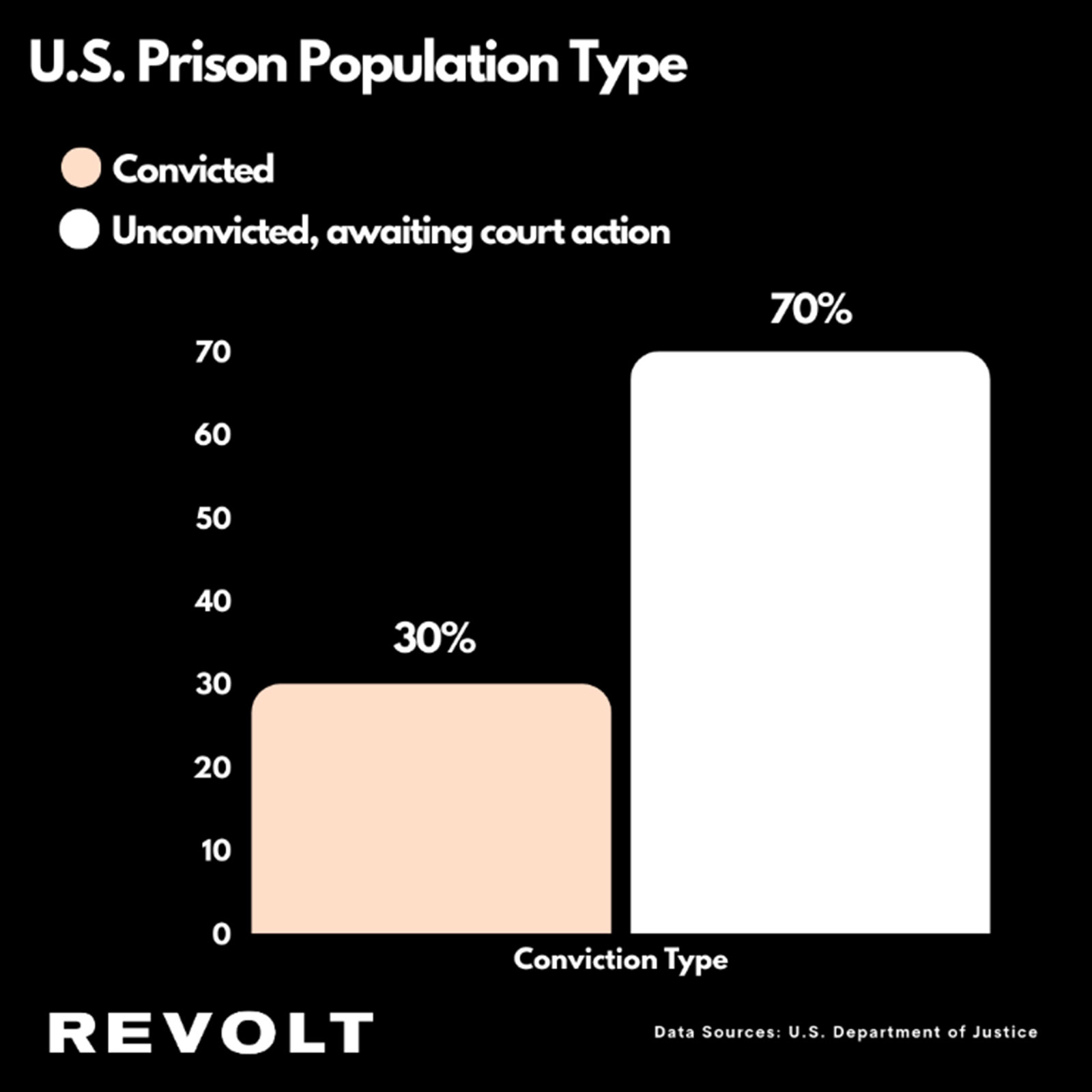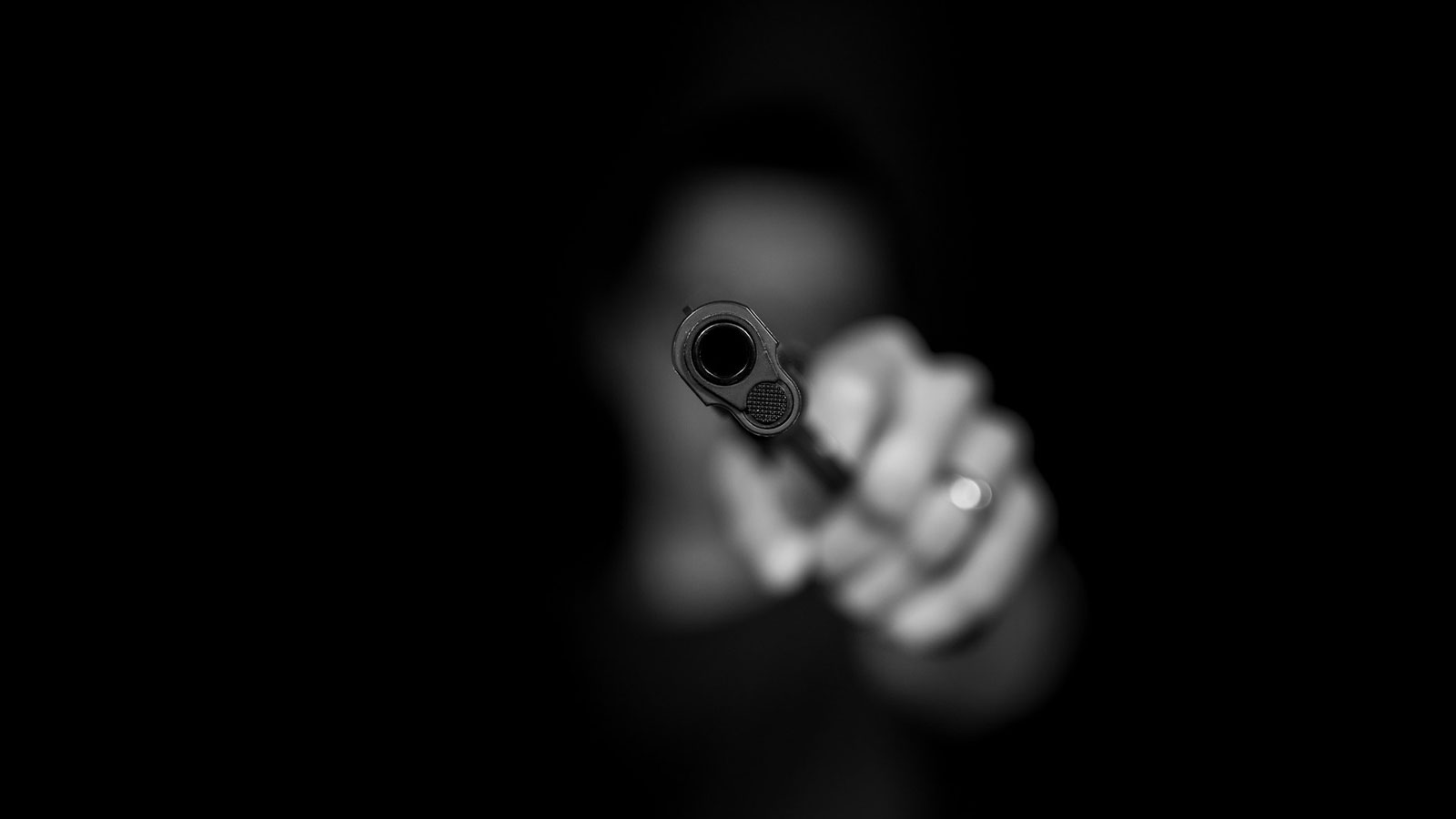Whether directly or indirectly, violence is often glorified and perceived to be an essential part of Black culture. The idea of “Black-on-Black” crime is a myth because the majority of all violent crime in the United States happens between people of the same race.
THE CLAIM: “Black-on-Black” crime is a legit problem. High incarceration rates prove that Black people are more violent, commit more crimes, and are responsible for the majority of white people killed in America.
OUR RATING: False
Whether directly or indirectly, violence is often glorified and perceived to be an essential part of Black culture. The idea of “Black-on-Black” crime is a myth because the majority of all violent crime in the United States happens between people of the same race.
According to the Vera Institute of Justice, 57 percent of [reported] violent crimes committed against white victims were perpetrated by white offenders. The term “Black-on-Black” crime rebrands acts of violence whenever the assailant and victim are of the same race, bounded by location and income. But have you ever heard of “White-on-White” crime? “Latinx-on-Latinx” crime? Or even “Italian-on-Italian” crime when describing the mafia? If the exact same crime happens in a wealthier, non-Black community or neighborhood, a certain level of neutrality is afforded. Police, politicians or media will simply describe the crime for what it is: a murder, assault, etc.
From President Reagan to Biden, violence within Black communities or the perception of more crime being committed by Black people has been used to push political agendas and campaigns. As a candidate in 2015, Donald Trump tweeted a graphic that claimed over 80 percent of white people killed in America are killed by Black people. However, just a quick glance at FBI data for that year clearly shows that his claim is inaccurate. Especially when you take into account the actual number of Black people within the country (less than 14 percent).

Graphic by REVOLT. Data Sources: FBI, Uniform Crime Reporting, @realDonaldTrump Twiiter/X account
First introduced in the 1970s and popularized throughout the ‘80s (synonymous with the Crack epidemic), the phrase “Black-on-Black” crime turns attention away from structural triggers like poverty, local underinvestment, historic segregation or unresponsive policing. Instead, it assigns blame and responsibility back to the very communities under siege, requiring help. Black people represent only 13.6 percent of the US population but are arrested, harassed, and convicted at a much higher rate than any other race. Greater interaction with the justice system does not equate with a race/ethnicity being more inherently violent. It just means you are being monitored closely; surveilled at a higher degree because there is an expectation already in place, ready for targeting.
A criminal will always feel empowered if they know exactly how to avoid legal repercussions. No matter the race, perpetrators are less likely to take the chance and commit the same type of crime in an affluent, whiter neighborhood. According to the U.S. Federal Reserve, the average net worth of a Black household is $44,900 while median wealth of a white household is $285,000. The racial wealth gap is not the only factor that defines how majority-Black communities are zoned out of safety. A Harvard University study estimated that the overall US housing market is short by nearly 4 million homes. For those looking to leave a crime-ridden neighborhood and find affordable housing, that shortage expands to 7 million. A lack of available housing or being priced out of your community makes the chances of residential mobility extremely low.
Thanks to redlining policies, economic disenfranchisement and gentrification, crossing over that invisible geo-income boundary and simply showing up in wealthier, whiter communities draws more attention —whether you are a criminal or not. Police will come. An investigation will happen. Witnesses will speak. There is also less fear of an unsupportive justice system and a criminal being released back into your community.

Graphic by REVOLT. Data Sources: Bureau of Justice Statistics, 2022 & U.S. Census Bureau
According to the NAACP, almost 75 percent of formerly incarcerated people remain unemployed a year after being released. Not having a stable job increases the chances that a person will return back to prison. Although recidivism rates are high across all races, Black prisoners have the second-highest rate at 74 percent over five years. The Brennan Center for Justice reports that a person loses over $500,000 in earnings over their lifetime by being incarcerated.
A built-in cycle of recidivism — due to a lack of structural support — in a middle to low-income Black neighborhood not only increases the likelihood of violence recurring, it also happens to fuel the prison industrial complex. In the US, Black people are incarcerated at more than fives times the rate of whites; pouring into a system where more than 4,000 companies profit from mass incarceration.
A former prisoner herself, infamous Black Panther and current University of California, Santa Cruz professor Angela Davis noted in her autobiography, “Jails and prisons are designed to break human beings, to convert the population into specimens in a zoo — obedient to our keepers, but dangerous to each other.”
It is much easier to “stay in your lane,” and stick to committing crimes in an area where you know police ‘expect’ you to remain and local government does not particularly care to invest in. As long as the crime happens within a certain zone of a city or area, away from the wealthy and white, courts will turn a blind eye at delivering justice or adequate support. In a special report to the UN, the Sentencing Project asserted that federal prosecutors are “twice as likely to charge African Americans with offenses that carry a mandatory minimum sentence than similarly situated whites.”
The report on racial disparities in the US criminal justice system also pointed out how pretrial detention heavily impacts the current prison population. If you are detained and awaiting trial, but cannot afford bond or a private lawyer of your choosing, you are more likely to accept a plea deal and be sentenced. According to the report, “Blacks and Latinos are more likely than whites to be denied bail, to have a higher money bond set, and to be detained because they cannot pay their bond.”
Using data from the U.S. Bureau of Justice, our graph below breaks down the type of inmates populating prisons.

Graphic by REVOLT. Data Sources: U.S. Department of Justice
In 2022, an estimated 70 percent of incarcerated people were unconvicted, awaiting court action or being held for other reasons. After being arrested, there is a greater chance of you being criminalized, and joining the prison population virtually on autopilot, than being let go and awaiting trial. This common scenario of diminished access to court resources or the chance to even defend yourself is also what helps strengthen the “Black -on-Black” crime narrative.
Using “Black-on-Black” to describe crimes ultimately dehumanizes victims. As the late great poet and artist Tupac Amaru Shakur once explained, “The same crime element that white people are scared of, Black people are scared of… just ‘cuz we Black we [supposed] to get along with the killers or something? We get along with rapists? ‘Cuz we Black and we from the same hood? What is that? We need protection too.”
Victims of crime are expected to withstand, be less traumatized and not even report or “snitch” on an incident if they happen to be Black. There is less structural accountability simply because Black life is considered expendable, but not because Black people are more tolerant of violence.
Source: REVOLT
Featured image: Photo by Max Kleinen on Unsplash














